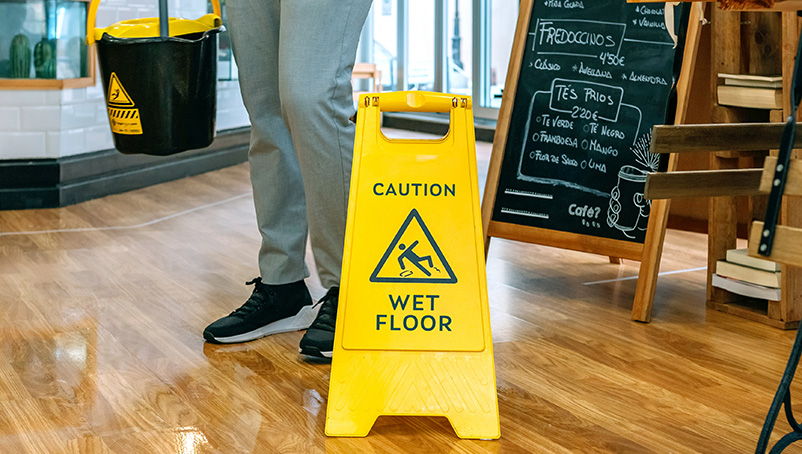What are insurance coverage limits?
Insurance coverage limits are the maximum amount an insurance policy will pay for a covered claim. Think of Insurance limits as financial guardrails. They define the line between what your insurance company will cover and what you’re responsible for paying out of pocket.
For example, if you have a commercial property insurance policy with a coverage limit of $100,000, that’s the most your insurance provider will pay out if your property is damaged.
Understand your small business insurance coverage limits to avoid financial surprises. Know this:
- Coverage limits protect your assets. They help ensure you have enough financial support to cover losses or damages.
- Different policies have different types of limits. Read the details to understand your coverage.
- Know your limits to avoid being underinsured. You’ll have to cover out-of-pocket expenses beyond your policy’s cap.
The 4 types of business insurance policy limits
Insurance policies come with different coverage limits, each serving a specific purpose.
- Per occurrence limits: This is the maximum amount your per occurrence policy will pay for a single accident. For example, if a storm damages your property, the per occurrence limit is how much your insurance will cover for just that one incident.
- Aggregate limits: This is the total amount your policy will pay for all claims during a specific period, usually a year. For instance, if your policy has a $500,000 aggregate limit, it covers up to $500,000 for all claims combined within the policy term — whether that’s one claim or 10.
- Per claim limits: Similar to per occurrence limits, per claim limits specify the maximum amount paid for each claim in claims-made policies. It’s instrumental in policies with multiple claims in a coverage period.
- Deductible: This is the amount you must pay out of pocket before your insurance kicks in. You’re probably familiar with this in health insurance. For example, if you have a $1,000 deductible and a $5,000 claim, you’ll pay the first $1,000 for your expenses, and your insurance covers the remaining $4,000.
Learn how occurrence vs. claims-made insurance protects your business.
What types of business insurance have coverage limits?
Various business insurance policies come with different types of coverage limits. For example:
- Commercial property insurance often includes limits, which specify the maximum amount the insurer will pay for certain types of property. It may also have aggregate limits, indicating the total coverage available for all claims during the policy term.
- General liability insurance typically features per occurrence limits for each claim and aggregate limits for all claims combined within the policy period. This coverage protects against non-employee bodily injuries or property damage to others’ property.
- Professional liability insurance usually has per claim limits for each mistake or oversight and aggregate limits for all claims over the policy term.
- Commercial auto insurance is slightly different. Auto insurance policies usually include per accident limits for damages resulting from a single accident and aggregate limits for all claims within the policy period, covering both vehicle damage and liability.
How to choose the right insurance coverage limits
To figure out if your coverage limits are adequate, compare your policy limits to the value of your assets, potential risks and industry standards. Regularly review and adjust your coverage to reflect changes in your business.
Let’s say you have a restaurant with equipment worth $150,000 (you priced it out, kept receipts etc.). Now, say your insurance policy has a $100,000 limit. That means you might need more coverage.
When you’re thinking about buying insurance and figuring out how much you need, consider some of these factors to ensure you’re adequately protected:
- Business size and type: Larger businesses or those in high-risk industries typically need higher coverage limits to protect against potential losses.
- Assets and property value: Ensure your coverage limits are sufficient to cover the total value of your business’s assets and property. Your coverage limits should be high enough to replace or repair these assets in case of damage or loss.
- Risk exposure: Higher risk levels, such as customer injuries or property damage liability, require higher coverage limits to handle potential claims.
- Legal requirements: Some industries or regions have legal requirements for minimum liability coverage limits. Comply with any regulations to avoid legal issues.
- Business location: Your location might affect risk factors and insurance needs; areas prone to natural disasters or high crime rates may require higher limits or additional insurance requirements.
- Business growth: As your business expands, adjust your coverage limits to match new assets, increased revenue and changing risk levels.
To ensure you’re adequately protected:
1. Conduct a risk assessment
A risk assessment is when you evaluate your business’s specific risks, such as property damage, liability and business interruption. Identify potential losses and estimate how much coverage you need to mitigate these risks.
2. Consult with insurance professionals
Click the chat icon on the bottom right of your screen to talk to an insurance agent. They can help you understand your options and recommend appropriate coverage limits based on your business needs and industry standards.
OR, you can start a free quote. We’ll ask you some questions about your business and offer coverage guidance at every step.
3. Review and update your policy regularly
Review your coverage limits to account for changes in your business, such as growth, new assets or changes in risk.
What happens if you exceed an insurance coverage limit?
If you exceed your coverage limit, you’ll pay any out-of-pocket costs beyond the policy’s cap. Ensure your limits are set to cover potential losses to avoid unexpected expenses.
For example, say your business has commercial property insurance with a coverage limit of $250,000. If a fire causes $300,000 worth of damage to your building and equipment, your insurance will cover only up to $250,000. You’d pay the remaining $50,000 out of pocket.









